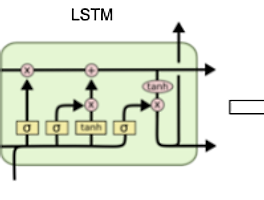#!/usr/bin/env python
# coding: utf-8
# In[1]:
corpus = ['king is a strong man',
'queen is a wise woman',
'boy is a young man',
'girl is a young woman',
'prince is a young king',
'princess is a young queen',
'man is strong',
'woman is pretty',
'prince is a boy will be king',
'princess is a girl will be queen']
# In[2]:
print corpus
# In[7]:
def remove_stop_words(corpus):
stop_words = ['is', 'a', 'will', 'be']
results = []
for text in corpus:
tmp = text.split(' ')
for stop_word in stop_words:
if stop_word in tmp:
tmp.remove(stop_word)
results.append(" ".join(tmp))
return results
# In[8]:
corpus = remove_stop_words(corpus)
print corpus
# In[10]:
words = []
for text in corpus:
for word in text.split(' '):
words.append(word)
words = set(words)
words
# In[12]:
word2int = {}
for i,word in enumerate(words):
word2int[word] = i
sentences = []
for sentence in corpus:
sentences.append(sentence.split())
WINDOW_SIZE = 2
data = []
for sentence in sentences:
for idx, word in enumerate(sentence):
for neighbor in sentence[max(idx - WINDOW_SIZE, 0) : min(idx + WINDOW_SIZE, len(sentence)) + 1]:
if neighbor != word:
data.append([word, neighbor])
# In[14]:
import pandas as pd
for text in corpus:
print(text)
df = pd.DataFrame(data, columns = ['input', 'label'])
# In[15]:
df.head(10)
# In[16]:
df.shape
# In[17]:
word2int
# In[19]:
import tensorflow as tf
import numpy as np
ONE_HOT_DIM = len(words)
def to_one_hot_encoding(data_point_index):
one_hot_encoding = np.zeros(ONE_HOT_DIM)
one_hot_encoding[data_point_index] = 1
return one_hot_encoding
X = []
Y = []
for x,y in zip(df['input'], df['label']):
X.append(to_one_hot_encoding(word2int[x]))
Y.append(to_one_hot_encoding(word2int[y]))
X_train = np.asarray(X)
Y_train = np.asarray(Y)
x = tf.placeholder(tf.float32, shape = (None, ONE_HOT_DIM))
y_label = tf.placeholder(tf.float32, shape = (None, ONE_HOT_DIM))
EMBEDDING_DIM = 2
# hidden layer: which represents word vector eventually
W1 = tf.Variable(tf.random_normal([ONE_HOT_DIM, EMBEDDING_DIM]))
b1 = tf.Variable(tf.random_normal([1])) #bias
hidden_layer = tf.add(tf.matmul(x,W1), b1)
# output layer
W2 = tf.Variable(tf.random_normal([EMBEDDING_DIM, ONE_HOT_DIM]))
b2 = tf.Variable(tf.random_normal([1]))
prediction = tf.nn.softmax(tf.add( tf.matmul(hidden_layer, W2), b2))
# loss function: cross entropy
loss = tf.reduce_mean(-tf.reduce_sum(y_label * tf.log(prediction), axis=[1]))
# training operation
train_op = tf.train.GradientDescentOptimizer(0.05).minimize(loss)
# In[20]:
sess = tf.Session()
init = tf.global_variables_initializer()
sess.run(init)
iteration = 20000
for i in range(iteration):
# input is X_train which is one hot encoded word
# label is Y_train which is one hot encoded neighbor word
sess.run(train_op, feed_dict={x: X_train, y_label: Y_train})
if i % 3000 == 0:
print('iteration '+str(i)+' loss is : ', sess.run(loss, feed_dict={x: X_train, y_label: Y_train}))
# In[21]:
vectors = sess.run(W1 + b1)
print(vectors)
# In[22]:
w2v_df = pd.DataFrame(vectors, columns = ['x1', 'x2'])
w2v_df['word'] = words
w2v_df = w2v_df[['word', 'x1', 'x2']]
w2v_df
# In[25]:
import matplotlib.pyplot as plt
fig, ax = plt.subplots()
for word, x1, x2 in zip(w2v_df['word'], w2v_df['x1'], w2v_df['x2']):
ax.annotate(word, (x1,x2 ))
PADDING = 1.0
x_axis_min = np.amin(vectors, axis=0)[0] - PADDING
y_axis_min = np.amin(vectors, axis=0)[1] - PADDING
x_axis_max = np.amax(vectors, axis=0)[0] + PADDING
y_axis_max = np.amax(vectors, axis=0)[1] + PADDING
plt.xlim(x_axis_min,x_axis_max)
plt.ylim(y_axis_min,y_axis_max)
plt.rcParams["figure.figsize"] = (10,10)
plt.show()
# In[24]:
# In[ ]:
'ML > tensorflow' 카테고리의 다른 글
| 이력서 자동 생성 - 로직 (0) | 2021.10.05 |
|---|
